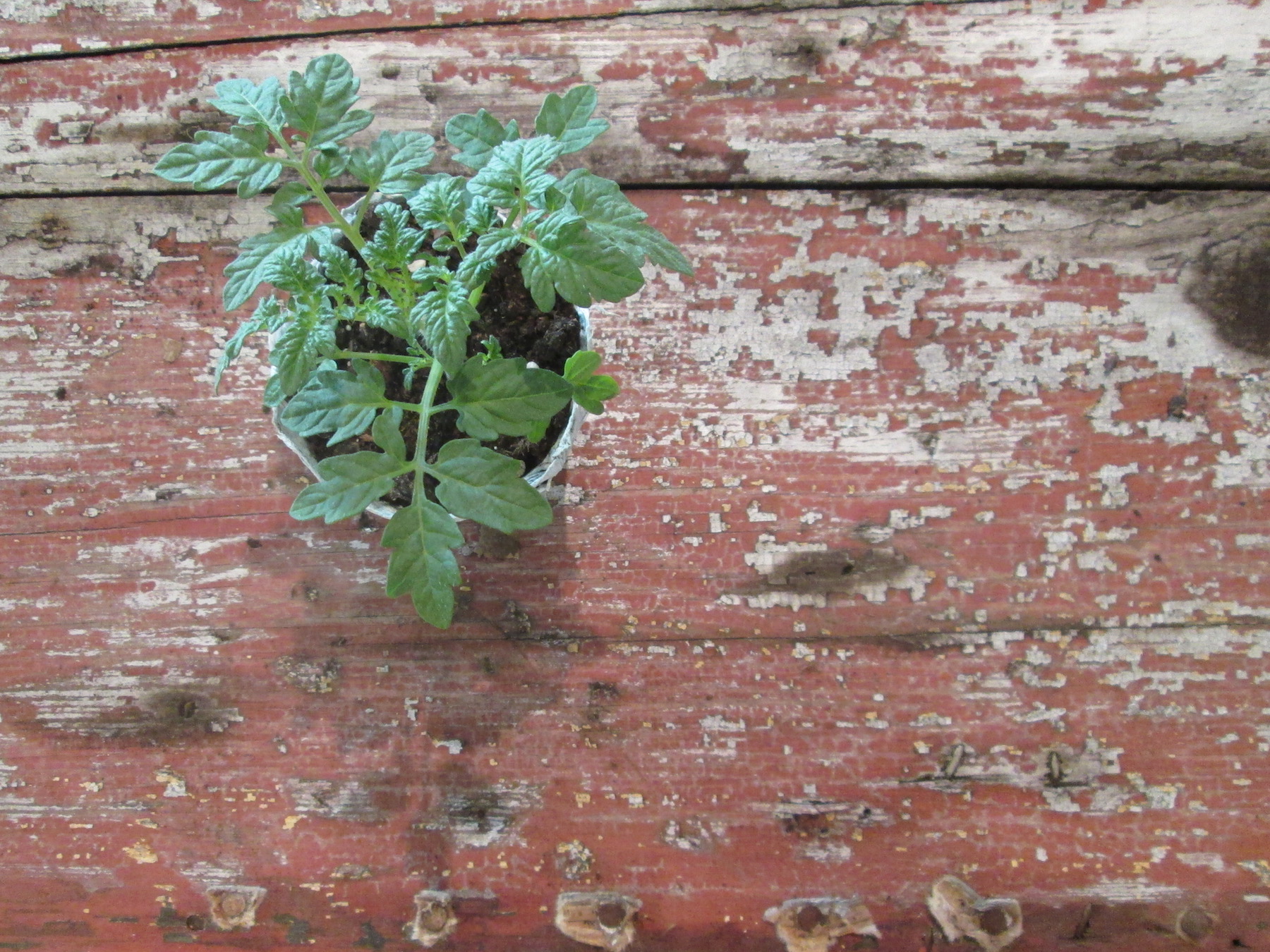Cultivate is one part of my BFA thesis work from my time at The Kansas City Art Institute. It is a project that encompasses ideas of domesticity, community, fertility, and family. The project was on display at the H&R Block Artspace encouraged the viewer to consider more about where their food comes from, their own ability to nurture, and ways of sharing the things they produce to benefit the greater community. One of the rules that I live by is to spend as much time as possible outside- I think it's pretty much always going to make you feel better! Growing your own food (even one little tomato plant) is a great way to do this.
The tomato plants are a hybrid breed called 'Sweet Baby Girl." You can read more about hybrid varieties here. One of the reasons that I chose a cherry tomato is that they are easy to grow in a twelve inch pot. I think that not having a garden, or much space outdoors sometimes keeps people from growing vegetables. I have personally had great success growing many vegetables in pots outside of my house, and want to share that option with wary new gardeners. There are no complicated instructions here, simply fill a pot with potting soil, insert plant into the potting soil, and water. You may need to experiment with which side of the house works best for the plant. A tomato needs to be in full sun to grow to its greatest potential, so that just means whichever side of your house is exposed to the most sun for the longest part of the day will be best for a tomato plant. Because tomato plants like to have something to climb on, you might eventually need to insert a small wire tomato cage, or homemade trellis into the pot to help the plant stay upright. If you would like more specific instructions on growing cherry tomatoes, check out this link- the people over at Rodale's Organic Life offer a straightforward description of the how, what, and why of planting cherry tomatoes.
The pots that are carrying these plants were made individually, with love, by me. I cut up old denim (100% cotton only) jeans into tiny pieces, soaked and cooked the pieces to remove dyes and sizing, beat the denim for five hours to turn it into pulp, mixed it with five-hour beaten abaca (banana leaf), pulled sheets of paper, pressed the paper, formed the sheets around a mold to create pots, and finally let them dry before popping them off of the mold. This whole process takes a few days. Because the pots are made from cotton and banana leaf, they are completely compostable and can be placed right into the ground with the plant. I have always been interested in repurposing materials, and with this project, I am giving the most utilitarian of objects (work jeans), even more work to do before their life cycle is complete. The new statistics for textile waste in our country are disturbing. On average, each American throws away 65 pounds of textiles each year, equaling a total of 14.3 million tons. I was wondering to myself why we can't do more work towards sustainability with all of the technology that we have. Then it occurred to me that maybe technology wasn't the answer, but a traditional fiber process instead. If we all take little steps together in considering the materials we are using and throwing away, maybe we can eventually make a bigger impact on the waste problem in our society.
So, in case I haven't made it clear yet, I LOVE DIRT! Whenever I go out to work in the garden, I feel so much better about everything. I always thought that was just because of getting some exercise and being in the sun. But now I know that it's the freaking dirt! There are actually antidepressant microbes in the soil that get into your system and make you happy! You can read more about this magical natural Zoloft here.
Stacks of denim and abaca pots after they were dried and removed from the molds
Here I am installing the work in H &R Block Artspace before the BFA show opening.
Photo credit Kadie Nugent
One of the people who was incredibly influential in my interest in mixing food and artwork was Chef MJ. I worked at her restaurant, The Corn Exchange, when I lived in South Dakota and it was one of the best times in my life. You can see her talking about food in this video..
